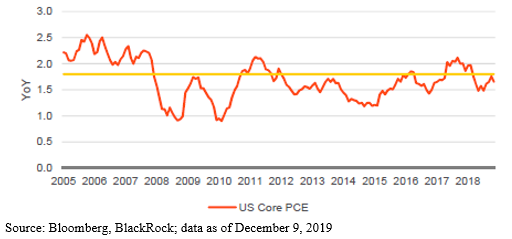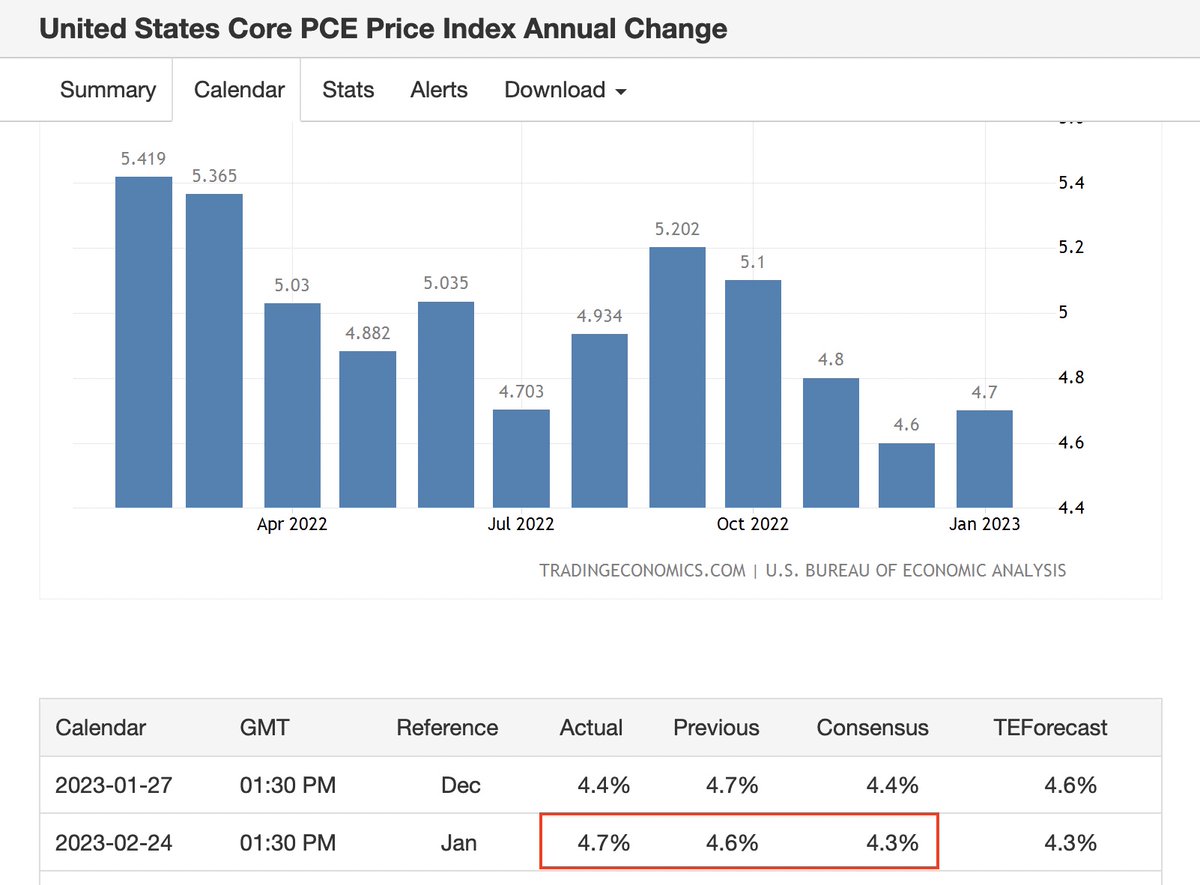Discover and read the best of Twitter Threads about #CorePCE
Most recents (11)
Today’s #CPI report for May showed another very firm depiction of where #inflation currently resides in the U.S., with #coreCPI (excluding volatile food and energy components) printing at 0.44% month-over-month and 5.33% year-over-year.
Meanwhile, #headlineCPI data printed 0.12% month-over-month and came in just above 4% year-over-year, with declines in #energy components and some food prices being offset by gains in #shelter and used cars and trucks.
Overall, headline #inflation does appear to be moderating at a faster pace and we believe that the trend in inflation (despite the firmness of core measures in today’s report) is broadly heading in the right direction, relative to the @federalreserve’s inflation target.
Today’s #CPI report continues to depict #inflation that is just too high for most people’s good, especially the @federalreserve’s.
In fact, the report showed that #inflation remains remarkably sticky, which doesn’t correspond to virtually any practical thinker’s timeline of when it might be expected to start to come down further.
These elevated levels of inflation continue to be remarkably high relative to the many months with which the #economy has now operated with persistently higher #InterestRates.
A week ago, after hearing #ChairPowell’s testimony before Congress, all eyes were set to be on today’s #inflation data, which presumably would help market participants better understand the #FOMC’s policy reaction at its March 22nd meeting.
What a difference a week makes these days! Of course, all eyes are still on today’s data, but now there are many other things we need to consider (such as #FinancialStability concerns), when judging the reaction function of the @federalreserve.
As we have long contended, #markets tend to be fairly myopic and lacking in patience, so having to focus on more than one news item at a time causes tremendous #uncertainty and thus greater market #volatility.
🐻♉️↗️↘️↔️⚠️🚩🔺🔻c 💰
Macro Review 2/26/23
🧵 1/8
If the #macro picture has been unclear, it has just come clearly into focus.
I am going to keep it simple this week -
crash risk is rising ⚠️🚩
Let’s dig into the market 🧮!
Macro Review 2/26/23
🧵 1/8
If the #macro picture has been unclear, it has just come clearly into focus.
I am going to keep it simple this week -
crash risk is rising ⚠️🚩
Let’s dig into the market 🧮!
In the big picture, today’s #CPI data displays continued slow progress toward a lower y-o-y rate of #inflation, having come down from a cycle peak of 8.9% in June 2022 to the 6.4% reading today, at the headline level, which is the lowest 12-month inflation gain since Oct 2021.
That is clearly encouraging, and in a lot better place than we had become used to in the Fall, which was at the center of the disappointment for the @federalreserve. However, like bridges during periods of traffic, progress can come with some slowing along the way.
For three straight months we saw essentially flat readings for #CoreInflation (ex-shelter), for an average level of 0.08%, yet this month we saw it move up to 0.2%.
The November #CPI report is notable in part due to the fact that it displays the second consecutive month of more moderate price pressures, providing some signal that the underlying trend of #inflation is decelerating.
Turning to the data, #coreCPI (excluding volatile food and #energy components) came in at 0.2% month-over-month and rose 6.0% year-over-year.
Meanwhile, #headlineCPI data printed 0.1% month-over-month and came in at 7.1% year-over-year, with declines in #UsedCars, medical care and airline fares contributing to this result. Still, both #shelter costs and the food index rose significantly.
The headline #inflation data today moderated a bit on the back of falling #gasoline prices, but it’s still running at a worryingly high rate.
Over time, we think the slowdown in #economic growth, the continuation of the @federalreserve’s assertive #HikingCycle and the possibility of resolution with several persistent supply chain issues should influence broad #inflation lower.
Still, while #CorePCE inflation (the #Fed’s favored measure) is likely to moderate in the coming months, it’ll still remain well-above the Fed’s 2% #inflation target.
The @federalreserve’s Federal Open Market Committee raised the target range for the Federal Funds #policy rate by 0.75% yesterday, to between 1.50% and 1.75%, as was increasingly anticipated.
The move by the #Fed to progress faster to neutral will be applauded in the long run by the #economy, business decision-makers and ultimately by# markets.
Like putting your car’s transmission (automatic or manual) into #neutral, getting to that place allows for decision-making flexibility given changing road conditions, particularly when the road to the #destination has become increasingly #murky.
Core #CPI (excluding those volatile #food and #energy components) came in at 0.6% month-over-month and rose 6.0% year-over-year.
Meanwhile, headline #CPI data printed at a very strong 1.0% month-over-month and came in at 8.6% year-over-year, spiking higher on #shelter, #gas and food costs.
These persistently outsized gains in #inflation are clearly having an impact on business and #ConsumerConfidence. Also, the #Fed’s favored measure of inflation, core #PCE, increased 0.34% in April, bringing the year-over-year figure for the measure to 4.9%, as of that month.
With respect to the data, #coreCPI (excluding volatile food and #energy components) came in at 0.6% month-over-month and at a high 6% year-over-year.
Meanwhile, headline #CPI data printed at a strong 0.6% month-over-month and came in at 7.5% year-over-year, the greatest increase over a 12-month period since February 1982.
Additionally, the @federalreserve’s favored measure of #inflation, #corePCE, increased 0.5% in December, bringing the year-over-year figure for the measure to 4.9%, as of that month.
‘Tis the season of prognostication, and in an age of one-word answers to complex questions, we’ve also witnessed a great deal of #hedged-language #forecasts ending in the suffix “ish,” so not to be outdone, we’d say that 2020 is looking rather 1.8ish!
What on Earth could this mean? We would suggest, firstly; that rather than seeing a calamitous #recession in 2020, or a strong cyclical resurgence of #growth, we instead think that real #GDP growth is likely to moderate slightly to around 1.8%, its average level since 2005. 

Further, over the next year, we think that #CorePCE #inflation may firm somewhat to around 1.8%, which is just above the average level for the measure over the past 15 years. 



